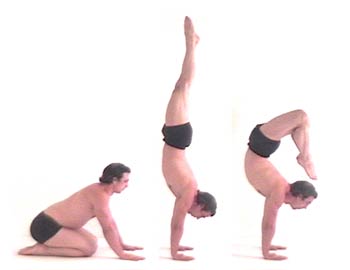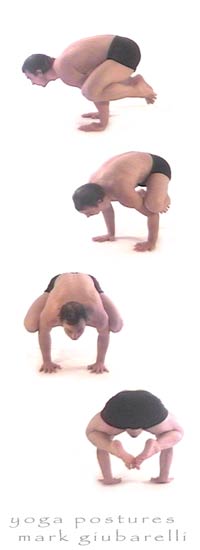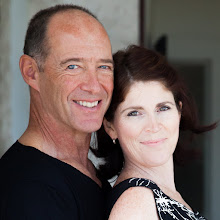As usual wikipedia has a lot of info to offer, so if you want to know more about the origins and history behind it, that is a good place to start.
There are various styles of yoga and the development of yoga followed various paths, so there are many similarities and differences in the various styles as they have evolved. The first recorded images of yoga are about 6-7 thousand years old. The first written accounts are from 1500 - 1200 BCE**, but it is understood that the traditions had already been orally transmitted for about a thousand years before that. The first description of the principles and goals of yoga is to be found in the Upanisads, thought to have been composed between 700 and 300 BCE.
- Look here for info on Yoga it links to various other topics including the roots of yoga, Patanjali and the branches of yoga etc.
- Look here for Hatha Yoga - The Hatha Yoga of Swatmarama and his contemporaries differs from the Raja Yoga of Patanjali in that it focuses on shatkarma, the purification of the physical as leading to the purification of the mind (ha) and prana, or vital energy (tha). The Raja Yoga posited by Patanjali begins with a purification of the mind (yamas) and spirit (niyamas), then comes to the body via asana (body postures) and pranayama (breath). Hatha Yoga is what most people associate with the word "Yoga" and is mainly practiced for mental, physical health, and vitality outside of India.
- Look here for Ashtanga Yoga - Raja yoga is also known as Ashtanga Yoga. The term Ashtanga means eight limbs, thus Ashtanga Yoga refers to the eight limbs of yoga. It is the classical Indian system of Hindu philosophy and practice (composed by Patanjali perhaps ca. 200 BCE).
Another good source of info is ABC of Yoga from which much of the info below was taken.
What most people refer to as simply "yoga" is actually Hatha Yoga.

Hatha Yoga is a system of yoga introduced by Yogi Swatmarama, a yogic sage in the 15th century in India. This particular system of yoga is the most popular one, and it is from which several other Styles of Yoga originated including Power Yoga, Bikram Yoga, Ashtanga Yoga, and Kundalini Yoga. The word "hatha" comes from the Sanskrit terms "ha" meaning "sun" and "tha" meaning "moon". Thus, Hatha Yoga is known as the branch of Yoga that unites pairs of opposites referring to the positive (sun) and negative (moon) currents in the system. It concentrates on the third (Asana or postures) and fourth (Pranayama or breathing) steps in the Eight Limbs of Yoga.
Hatha Yoga tries to achieve balance between body and mind, as well as attempts to free the more subtle spiritual elements of the mind through physical poses or Asanas, Breathing Techniques or Pranayama, and Meditation.
* Asanas are various body positions (postures or poses) designed to improve health and remove diseases in the physical, causal, and subtle bodies. The word "asana" is Sanskrit for "seat", which refers not only to the physical position of the body but also to the position of the body in relation to divinity. They were originally meant for Meditation, as the postures can make you feel relaxed for a long period of time. The regular practice of Asanas will grant the practitioner muscle flexibility and bone strength, as well as non-physical rewards such as the development of will power, concentration, and self-withdrawal.
* Pranayama is derived from the words "prana" (life-force or energy source) and "ayama" (to control). It is the science of breath control. This is an important part of Hatha Yoga because the yogis of old times believed that the secret to controlling one's mind can be unlocked by controlling one's breath. The practice of Pranayama can also help unleash the dormant energies inside our body.
The practice of Hatha Yoga can help you recognize your hidden physical and mental potentials. Through the continued performance of Asanas, you will gain flexibility and strength, and learn to be more relaxed under otherwise stressful situations. Hatha Yoga's Relaxation Exercises will open the energy channels, which in turn allows spiritual energy to flow freely. Some Asanas also massage and tone your internal organs, helping to prevent diseases such as diabetes, arthritis, and hypertension. They also bring balance to internal and glandular functions. Pranayama, on the other hand, can help manage asthma and bronchitis.
 Hatha Yoga can also help you cope with stress, relieve tension, and deal with anxiety and depression. More importantly, it will help you put your mind in a focused state to prepare for Meditation and, eventually, the search for enlightenment.
Hatha Yoga can also help you cope with stress, relieve tension, and deal with anxiety and depression. More importantly, it will help you put your mind in a focused state to prepare for Meditation and, eventually, the search for enlightenment.The practice of Yoga does not only focus on physical postures to improve the body, but deals with all the aspects of our being and our lives. C.E., Patanjali who is considered the father of Modern Yoga compiled 195 aphorisms which are called the Yoga Sutra. In the Yoga Sutra, he described the eight aspects of a Yogic Lifestyle and called it the Eight Limbs of Yoga. The limbs are practical guides to a person's personal development to achieve the harmony of the mind, the body and the spirit which leads to Samadhi or enlightenment.
More on The Eight Limbs of Yoga (Hatha focuses on limbs 3 and 4, but does not proclude following the others as well, but those would largely require that you immerse yourself into a yogic lifestyle - although we can all benefit from trying to follow the principles as best we can in our regular daily lives.)
* Yamas
Yama is your attitude towards others and the world around you. There are five Yamas:
1. Ahimsa or non-violence. This Yama does not only mean not doing harm to others in thought and in deed, but also to practice acts of kindness to other creatures and to one's own self.
2. Satya or truthfulness. Satya is the Yama that is about living a truthful life without doing harm to others. To practice Satya, one must think before he speaks and consider the consequence of his action. If the truth could harm others, it might be better to keep silent.
3. Asteya or non-stealing. This Yama is not only concerned about the non-stealing of material objects but also the stealing of other's ideas and other forms of possession. Using power for selfish motives or telling someone else about confidential information you had been entrusted with is against Asteya.
4. Bramacharya or non-lust. Bramacharya means to move toward the essential truth or to achieve self-control, abstinence or moderation especially regarding to sexual activity. It is about not giving in to our ego's excessive desires or taking nothing in excess.
5. Aparigraha or non-possessiveness. This Yama is about living a life free from greed or taking only what is necessary and do not take advantage of someone or of a situation. It is about using our powers correctly and appropriately and not exploiting others.

* Niyamas
Niyama is how you treat yourself or your attitude towards yourself. The following are the five Niyamas:
1. Sauca or cleanliness. This Niyama is concerned on both the outer and inner cleanliness. The practice of pranayamas, asanas and Yogic cleansing practices to detoxify and cleanse the physical body are necessary to achieve inner cleanliness. The mind must also be kept clean or pure. Outer cleanliness, on the other hand, means to keep an clean environment or surroundings.
2. Santosha or contentment. Santosha is to practice humility, modesty and finding contentment with what you have and who you are.
3. Tapas or austerity. This Niyama refers to keeping the body in good condition. Tapas is practiced through disciplining the body, speech and mind like eating only when hungry and maintaining a good posture.
4. Svadhyaya or study of the sacred text and of one's self. This involved studying one's self, self-inquiry and self-examination and other things that can help you get to know yourself more. As your knowledge about yourself grows deeper, so is your connection to the higher power and your union with all things.
5. Isvarapranidhama or living with an awareness of the Divine. This Niyama encourages us to let go of our false sense of control and to connect to the Divine or that which gives us the sense of wholeness and sacredness.
* Asanas or Physical Poses
The Asanas are designed to free our mind and body from tension and stress. It relaxes, rejuvenates, and energizes the body and aims to bring the body and the mind into a harmonious union. Asanas should be done with comfort, ease, alertness and steadiness, achieving a balance between ease and effort.

* Pranayama or Breathing Exercises
Pranayama is the control of breath. The breath is regulated and controlled through the practice of breathing exercises. The duration of inhalation, retention, and exhalation of breath is regulated with the aim of strengthening and cleansing the nervous system and increasing a person's source of life energy. Pranayama practice also makes the mind calmer and more focused.
* Prathayara or Withdrawal of the Senses
This occurs during meditation, pranayama or asana wherein you are so focused and immersed on your Yoga, Meditation or Breathing Pose that you become unaware of outside situations. Your focus becomes inward and you are no longer distracted by outside events.
* Dharana or Concentration
Dharana is training the mind to focus without any distraction. To achieve this, you can focus your mind into an object at a time. This can also serve as a preparation for meditation.
* Dhyana or Meditation
Meditation is the practice by which there is constant observation of the mind. It means focusing the mind on one point, stilling the mind in order to perceive the Self. It is an uninterrupted flow of concentration aimed to heighten one's awareness and oneness with the universe. It is also an important tool to achieve mental clarity and Health.
* Samadhi or Enlightenment
This is the ultimate goal of the Eight Limbs of Yoga. It is characterized by the state of ecstasy and the feeling that you and the universe are one. It is a state of peace and completion, awareness and compassion with detachment.
The practice of Yoga does not only deal with developing the body but also covers all the aspects of a person's life as stated in the Eight Limbs of Yoga. It is concerned about the physical, mental and spiritual well-being of an individual as well as his environment and relationship with other creatures. Real practice of these eight principles leads to deeper self-knowledge, love and respect towards other people and creatures, cleaner environment, healthy diet, and union with the Divine.
-------------------------------
Not All Yoga Is Created Equal
You say Ashtanga, I say Kundalini. What's the difference? Use this guide to find the right yoga for you.
Are You a Sweat-Hog or a Swami?
Not sure which style of yoga is right for your personality and body type? This quiz will enlighten you.
--------------------------------
More on the different styles:
Hatha Yoga: Hatha Yoga Styles
Hatha Yoga is the branch of Yoga that focuses on the physical well-being of a person and sees the body as the driver of the spirit. Each of these styles of yoga use Asanas or poses to balance the body, mind and spirit. However, some emphasise the alignment of the body while others concentrate on co-ordinating the movement and breath. Ten of the most common styles of Hatha Yoga are listed below: Ashtanga Yoga (as modernised in the West - remember it was previously stated that this is part of Rama Yoga which focuses on the MIND first, which it originally was, now howvere it has become to be known as POWER yoga and has a strongly exercise and sweat focus), Iyengar Yoga, Viniyoga, Bikram Yoga, Kundalini Yoga, Ananda Yoga, Anusara Yoga, Jivamukti Yoga, Sivananda Yoga and Svaroopa Yoga.
Ashtanga Yoga
Ashtanga was developed by K. Pattabhi Jois. It is a very physically demanding form of yoga often known as 'power yoga'. The system of Ashtanga is based on six series of increasing difficulty. It involves performing a challenging sequence of poses with Ujjayi Breathing and vinyasas which will produce intense internal heat and a purifying sweat that detoxifies muscles and organs.
Iyengar Yoga
Iyengar Yoga was named after B.K.S. Iyengar. This style of yoga focuses on detail and precise alignment of postures. Iyengar yogis use yoga props such as blocks and belts. The props are meant to help achieve the best possible pose and provide support to minimize the risk of injury. Iyengar poses are held longer and repeated several times.
Viniyoga
Vini yoga roots from Sri. T. Krishnamacharya's practices, teacher of well-known contemporary masters K. Pattabhi Jois and B.K.S. Iyengar. Yogis practice modified poses to meet their specific needs. This style of yoga promotes healing and flexibility.

Bikram Yoga
Bikram Choudhury founded this style of yoga. It is typically practiced in a room with a temperature of up to 100 degrees. Scientifically, this warms and stretches muscles, ligaments and tendons in the order in which they should be stretched. Therefore it is a very sweaty practice. Bikram is a series of 26 Asanas accompanied by Kapalabhati Breath, the 'breath of fire'.
Kundalini Yoga
In this style of yoga, the spine is regarded as a snake. It was brought to the West by Yogi Bhajan in the late 1960s. The practice concentrates on releasing the Kundalini energy which is found at the base of the spine. Kundalini Yoga includes a series of classic poses and chanting. The emphasis however, is not on the Asana but on the chanting. Spiritual transformation is the main aim of practice.
Ananda Yoga
Ananda Yoga is a gentle practice. Swami Kriyananda developed this classical style of Hatha yoga that uses Asana and Pranayama to engage energies of the chakras.
Anusara Yoga
Anusara is a combination of Hatha yoga and biochemical principles. It is a very modern style of yoga developed by John Friend. Practice is described as heart-oriented and spiritually inspiring and concentrates on outer and inner body alignment. Different students' abilities and limitations are deeply respected.
Jivamukti Yoga
Perhaps the latest form of Hatha yoga, Jivamukti was created by David Life and Sharon Gannon in 1984. Like Ashtanga yoga, practice is vigorously physical but more intellectually stimulating. There is a great deal of emphasis on the educational aspect of the practice and students are taught how the philosophies of yoga came about.
Sivananda Yoga
Sivananda was developed by Vishnu-devananda. Practice consists of Pranayama and classic Asanas - 12 basic poses. Diet and positive thinking are also heavily emphasised on in this style of yoga.
Svaroopa Yoga
Rama Berch founded Svaroopa Yoga. It introduces alternative ways of doing familiar poses with deep emphasis on the spine. It aims to open the spine by developing gentle movement from the tailbone right through to the top of the spine. It is another style of yoga which is not at all athletic and more involved in consciousness and healing properties.

A good general Yoga FAQ can be found here
The Hatha yoga I do has a good balance between Western pragmatism and Eastern philosphy and spirituality. We incorporate aspects of all the various Hatha styles, and even pilates movements at times too, this results in a good overall balance which is accessible to the tree-hugging vegan, right through to busy business person. It caters for the beginner right through to advanced students and makes for a nice wholistic and centering ritual each week.
So there you go, use it, don't use it...
__________________________________
** BCE stands for "Before the common era." It is expected to eventually replace BC, which means "Before Christ," or "Before the Messiah ". BC and BCE are also identical in value.


Wow - obviously not busy at work today! But I appreciate that - this is brilliant!
ReplyDeletePranayama here I come!
I had no idea there were so many different forms! wow! Thanks for putting in that quiz as i was totaly confused. APparantly this is what i am looking for:
ReplyDeleteB. If you tended toward (b), you'll likely enjoy approaches that zero in on details and help you adjust your practice to meet your individual needs. Iyengar, Anusara, and Viniyoga are especially noted for this. The complexities of Tantra-based styles like ISHTA might also appeal to you, and some Bikram teachers may provide you with the in-depth analysis you relish.